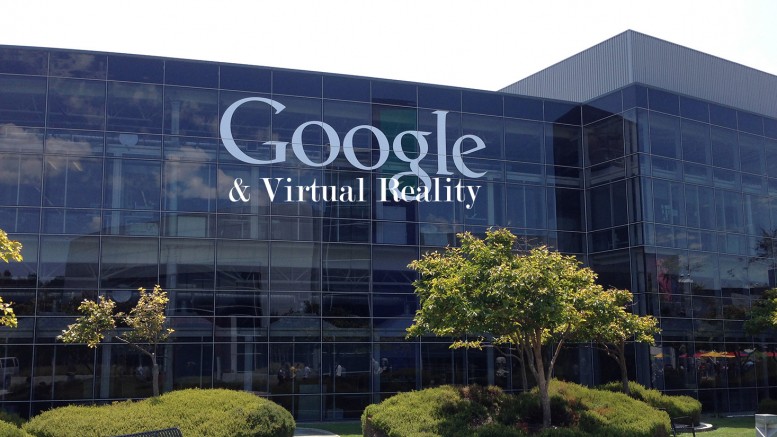Last week, Google announced the establishment of a new Virtual Reality unit and named Clay Bavor as the Vice President of this new unit. Clay has been running the product management division at Google and has some good product development and management experience.
Clay was the team lead of Google’s VR unit. During last year’s I/O conference Clay Bavor showed off a new incarnation of the cardboard goggles . During this event he revealed that the company has designed a 16-lens camera that can record videos across 360 degrees, and that it’s developing a software system that can turn these videos into the kind of immersive, stereoscopic experiences the goggles are intended to provide. This was in partnership with GoPro. This was their “Jump” initiative. At the same time, Clay also commented that all this is merely a precursor and there was a lot going on in virtual reality at Google.
Interestingly, last week an analyst at Goldman Sachs announced that Virtual Reality will be greater than TVs in just ten years. One has to consider this statement in light of what we know today in VR. I’m pretty sure that a few headsets and some games are not going to make this technology greater than TVs. VR based games is just the beginning of this technology. This will provide a taste of the technology and its potential to the consumers.
PC’s – The Double edged Sword
One of the main barriers to entry for experiencing this rich VR experience is the dependence around high powered PC’s. Last week also marked the release of news that showed PCs sales have been declining again except for Apple PC’s.
To think that the PC industry is going to have a turnaround because of Virtual Reality is a little far fetched. Most computing has shifted from PC’s to handhelds and mobile in the recent years.
On the other hand having the high powered PC is a prerequisite for the rich VR experience. The average consumer is going to need a lot more convincing before he or she can spend 1500 – 1700 dollars on a PC capable of providing Gaming experience. More VR based non gaming experiences will need to become mainstream before average people fork out 1500 dollars on a PC. Either the Mobile based VR experience gets more better than what is out there currently or PC prices drop dramatically.
I think it will be the former. If you think about it in the last decade it was mobile that made internet accessible to millions of people in the developing world. As handset prices fell, more and more people were able to get online and contribute to the social communities. It is hard to believe that these folks are going to go back to PC’s. If VR becomes synonomous with just next level gaming, there is a risk that its potential gets limited and perhaps becomes a fad with time.
So how does this tension play out for a win win for VR?
Google’s VR Initiatives
This is where I think Clay Cardboard and his team come in. Armed with resources and some of the best minds in the industry, they will have to find a middle ground between the Power PC and Mobile VR to make the technology sustainable. Google announced new changes for its cardboard SDK last week. One of the change was the introduction of spatial audio support. They already have a distribution channel in Youtube which started supporting stereoscopic video last year and now with initiatives that are based on tinkering the headsets and the associated SDK, there is bound to be more good news out of Google in 2016. In the short term I’m sure we will see more changes in Youtube as advertisers plan on increasing their spend on Virtual reality based advertising. By providing rich VR features on Youtube, Google will be able attract this new source of revenue from VR advertising.
As the hardware related platforms and consumption devices evolve, I think we will also begin to see new VR use cases come out of Google. It is also possible that the distinction that exists today between AR and VR begins to slowly fade.
The Magic Leap Equation
It is important to remember that Google has already spend more than half a billion dollars in Magic Leap.
Magic Leap appears to have significantly broader aims, describing an ambitious vision for displaying rich interactive graphics alongside what people see naturally, using what it calls a dynamic digitized lightfield signal.
“Current technologies we use to access the digital world limit, or even take us away, from the real world,” Magic Leap’s website reads. If this technology is successful, there will lot of use cases based on it that provide alternative economic value. As more economic value is created you will see more competitors trying to take a piece of the market share and it will spur more innovation. With innovation both price and cost curves will fall over time and the technology can then become a mainstay.
FANG & VR
2016 is definitely going to be a big year for VR. As the news around the big 3 settle in by second quarter, I think we will see more announcement from FANG ( Facebook , Aamazon, Netflix and Google). It’s interesting to see that all the four companies in this group have several VR initiatives in flight. By Earnings standards all the four companies are still growing at a rapid rate and are still the darlings of wall street when it comes to technology. We should definitely expect more VR based offerings out of these companies as we progress into 2016.

Be the first to comment on "Google and Virtual Reality"